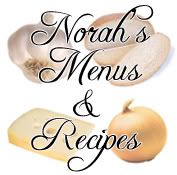

This was a fairly easy bread to make and if your looking for an easy loaf to start with give this one a try. I will admit I prefer the First Loaf recipe I posted 2 days ago over this loaf. We still have bread left 2 days later so I think even the family does not like this bread as much as the first recipe. The bread seemed a little heavier and not as fluffy as the First Loaf recipe. However I can see myself making this bread when I'm short on time and need bread in a hurry.
30 Minute White Bread
Bernard Clayton's New Complete Book of Breads
1 cup milk
2 tablespoons butter
3 teaspoons salt
1 cup lukewarm water (105-115 degrees)
2 packages dry yeast
2 tablespoons sugar
6 to 7 cups bread or all purpose flour
1 tablespoon butter, melted
You'll need 2 medium loaf pans, greased.
Warm the milk in a saucepan to soften the butter for a few minutes. Add the salt and the lukewarm water. Add the yeast and sugar and stir to dissolve.
Stir in 2 cups flour and beat for 3 minutes at medium speed in an electric mixer. Gradually add 2 more cups flour, and continue beating for 3 minutes.
Turn off the mixer and add about 2 more cups of flour. Work it in with a spoon, and when it becomes stiff, with your hands.
Knead with a dough hook on the mixer for 8 minutes.
Divide the dough in half, and shape the balls. Let rest under a cloth for 5 minutes.
Form the loaves by pressing each ball into an oval, roughly the length of your baking pan. Fold the oval in half, pinch the seam tightly to seal, tuck under the ends, and place seam side down in the pan. Brush the loaves with melted butter.
Place the pans in a cold oven and turn heat on to 400 degrees for 60 seconds, 1 minute no more! Turn it off.
About 30 minutes later turn the oven to 400 degrees and bake for 45 minutes, or until loaves are brown. When done, they will sound hollow when tapped on the bottom crust with the forefinger. If the crust is soft, return to the oven, without the pans for 10 minutes.
This bread freezes well.










I can actually see a difference in crumb and texture between the 2 loaves...could you tell a taste difference? Was it more yeasty?
ReplyDeleteI believe that allowing your bread to rise in the bowl and in the pan develops the crumb and the flavor of the bread.
It's always good to have a quick recipe...there are a lot of busy mothers out there~
Yes there was a huge difference in crumb and texture between the two loaves. This loaf was more chewy and did not feel light. I hope that made sense. I didn't notice a more yeast taste but there was a different taste compared to the first loaves.
ReplyDelete